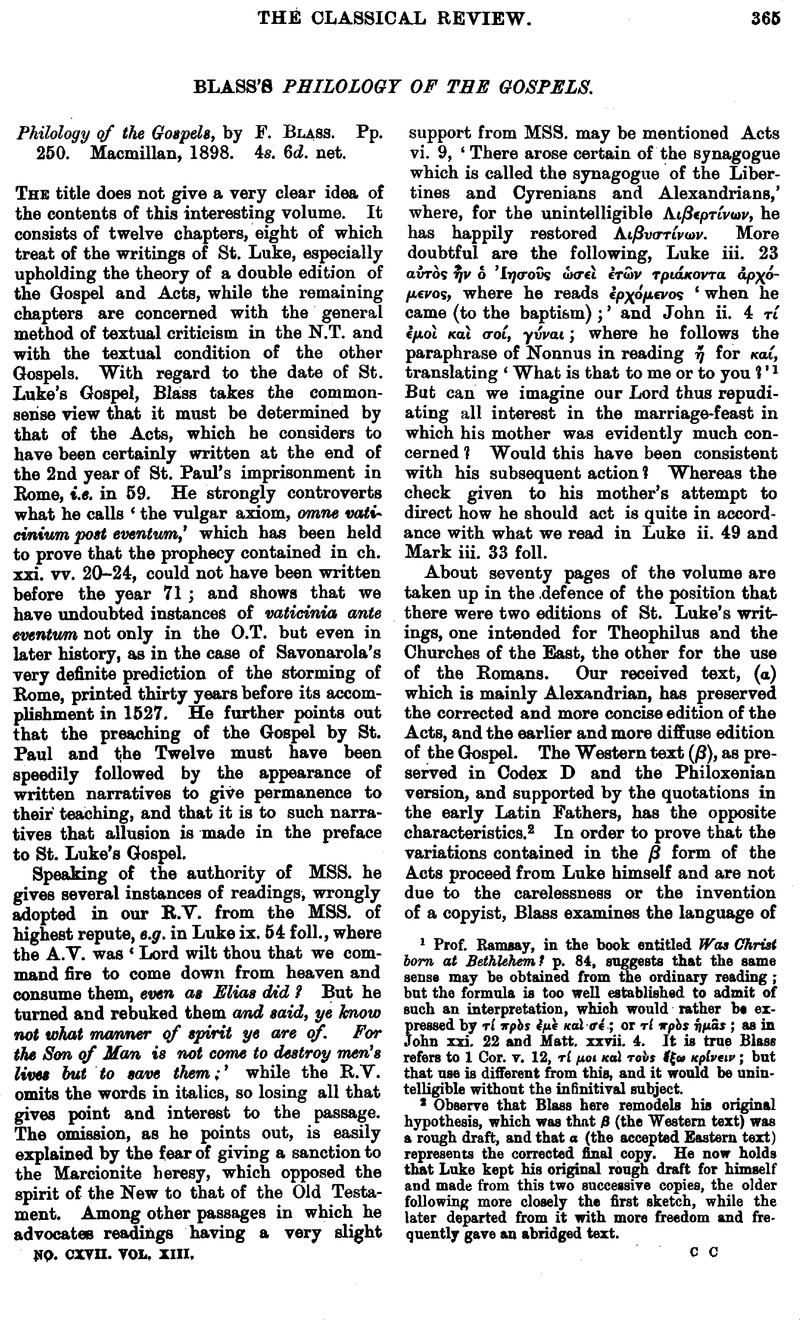No CrossRef data available.
Article contents
Blass's Philology of the Gospels - Philology of the Gospels, by F. Blass. Pp. 250. Macmillan, 1898. 4s. 6d. net.
Published online by Cambridge University Press: 27 October 2009
Abstract

- Type
- Reviews
- Information
- Copyright
- Copyright © The Classical Association 1899
References
page 365 note 1 Prof. Ramsay, in the book entitled Was Christ born at Bethlehem? p. 84, suggests that the same sense may be obtained from the ordinary reading ; but the formula is too well established to admit of such an interpretation, which would rather expressed by τ πρς μ κα σ; or τ πρς μς; as in John xxi. 22 and Matt, xxvii. 4. It is true Blass refers to 1 Cor. v. 12, τ μοι κα τοὑς ξω κρνɛιν but that use is different from this, and it would be unintelligible without the infinitival subject.
page 365 note 2 Observe that Blass here remodels his original hypothesis, which was that β (the Western text) was a rough draft, and that α (the accepted Eastern text) represents the corrected final copy. He now holds that Luke kept his original rough draft for himself and made from this two successive copies, the older following more closely the first sketch, while the later departed from it with more freedom and frequently gave an abridged text.
page 366 note 1 Not A (Antiochena) and R (Romana) as in p. 107.




